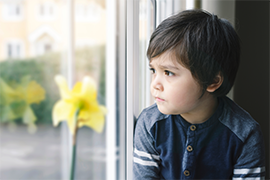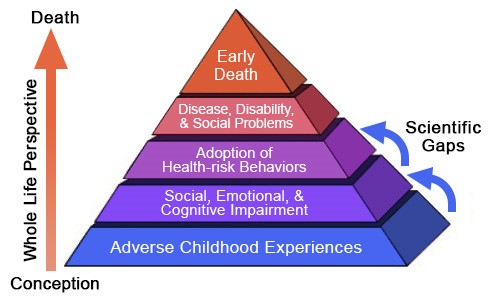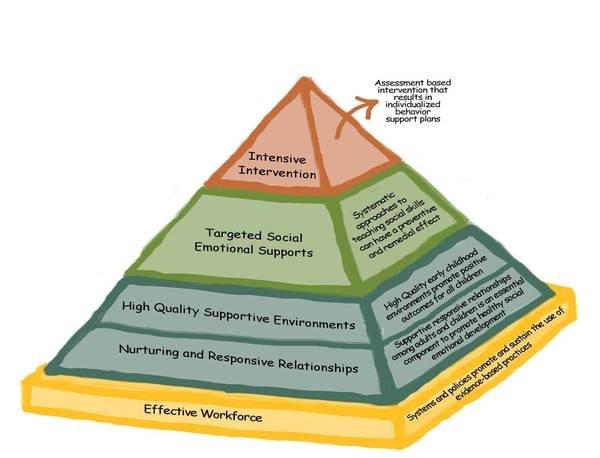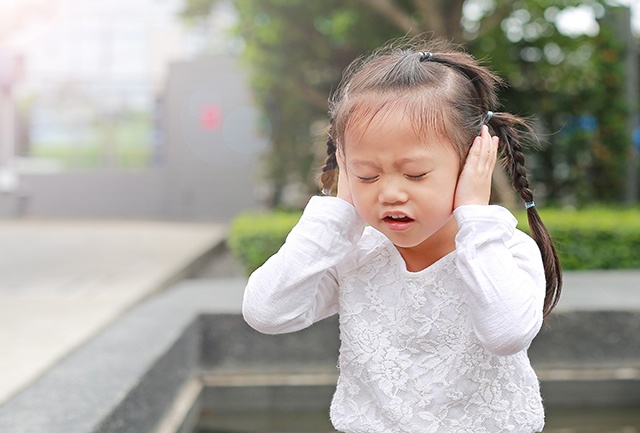 The Substance Abuse and Mental Health Services Administration (SAMHSA) defines Adverse Childhood Experiences, or ACEs, as “stressful or traumatic events, including abuse and neglect.” New national data reveals that more than 46 percent of U.S. children—34 million under age 18—have experienced at least one traumatic event. More than 20 percent have experienced two or more.
The Substance Abuse and Mental Health Services Administration (SAMHSA) defines Adverse Childhood Experiences, or ACEs, as “stressful or traumatic events, including abuse and neglect.” New national data reveals that more than 46 percent of U.S. children—34 million under age 18—have experienced at least one traumatic event. More than 20 percent have experienced two or more.
ACEs include:
- Physical abuse
- Sexual abuse
- Emotional abuse
- Physical neglect
- Emotional neglect
- Intimate partner violence
- Mother treated violently
- Substance misuse within the household
- Mental illness of a household member
- Parental separation or divorce
- Incarceration of a household member
These experiences can have serious, long-term impacts on a child’s health and well-being, potentially affecting physical, social, emotional, and cognitive development. With ACEs come an increased risk in smoking, alcoholism, depression, and many other illnesses and unhealthy behaviors (see graphic below). Until recently, it was thought that these physical and mental health problems showed up later in life. But a recently published study in JAMA Pediatrics found that the health consequences of multiple adverse experiences can be seen in children as young as nine. In the study, children were followed starting at age three, meaning that experiences from as early as three years old have a huge impact on a person’s life.
SAMHSA
As we learn more about the health outcomes of adverse childhood experiences, we are also developing tools to help affected children cope. A growing body of research about children’s resilience has led to development of certain interventions that can reduce the impact of trauma and help children thrive despite adversity. Increasingly, people and organizations that serve children are being pressed to adopt a trauma-informed approach to their work.
Those of us in child care need to embrace that approach and focus on understanding what kinds of daily support kids who have experienced trauma might need. At a minimum, they need a child care environment that is:
- Compassionate
- Safe
- Predictable
- Attentive to transitions and the challenges they pose
- Attentive to sensory needs
- Committed to creating opportunities to learn and practice emotional regulation, modulation of behaviors, and working with others
They also need providers and teachers who are trained in understanding trauma, and we currently have a system that can make it hard to get that training. The Pyramid Model (pictured below) is a framework of evidence-based practices for supporting social-emotional development in young children.
It is been used effectively in Head Start and some child care programs. But ‘some’ is not enough. Child care systems need to invest in the bottom layer of the pyramid—support for the child care workforce, including training on the Pyramid Model—and create community connections so programs have access to the higher-tier supports.
We’re interested in hearing about your experience. What challenges do you see with the kids in your care? Have you received training on working with young children who have been traumatized? Let us know in the comments below.







